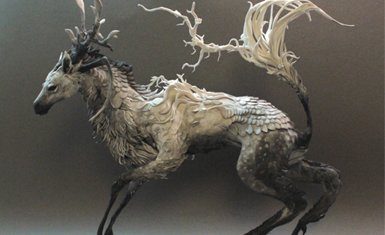How is summer in Tokyo?
In a word, summer in Tokyo is unbearable, because there is a lot of humidity in Japan. Every summer there are four or five extremely muggy days in which you sweat even when you are in the dark and the temperature does not drop below 25 degrees even at night. I’m envious of the European summer.
How is winter in Tokyo?
It is very good, in Europe, for example, in winter it is very cold, due to the low humidity. On the other hand, in the winter of Tokyo, it hardly rains and it is not very cold. Also, as the air is pure, there are days when you can see Mount Fuji from the center of Tokyo.
Is winter the most suitable season to visit Japan?
I recommend that you visit our country in spring or in Autumn. Spring is mild and the ccerezos bloom between the end of March and the beginning of April. The autumn is pleasantly cool, the leaves of the trees turn yellow and red and nature is very ballas. The bad thing is that it rains often in spring and autumn.
Are the rainy seasons spring and autumn?
In these seasons it does not rain enough to be able to call them the rainy season. There is a rainy season in Japan between June and July when it rains almost every day.
Wonderful 4 seasons of Tokyo
At the end of March, the cherry blossoms begin to bloom. In the city there are several points to admire flowers such as Chidorigafuchi, the Sumida river. where the Cerezo festival held in various places like Ueno park. At the arrival of May, at the Ookunitamajinja Shrine in Fuchu the Kurayami Festival is celebrated, where we can appreciate the famous Mikoshio Portable Shrine that begins its procession at the end of May 5. In mid-May, the Asakusa Kanda Matsuri Festival and Sanja Matsuri Festival are held, animated by the charm of Edo, irresistible to the Edokko (native of Tokyo)
At the beginning of July, the Asagao-ichi (Ipomeas) market takes place in a different place such as Iriya. In addition, exhibitions of Artificial Fire are held everywhere as in Jingu-Gaien, which begin at the end of July in Rio Sumida. Among them, the Tokyo Bay Grand Fireworks Display is a typical summer scene in the harbor.
Around August 15, the Fukagawa-Hachiman Matsuri Festival of the Tomioka-hachimangu shrine is celebrated, where the crowd watered the bearers of the Mikoshi or portable shrine, which is why it is also called the Mizukake Festival. At the end of August, the Asakusa Carnival takes place.
At the end of September, Ikebukuro is full of Festivals. The Fukuro festival with dances, music, and the great portable shrine, It is full of fun, Between October 11 and 13, the Mantou impresses with 100 paid, in the Buddhist ceremony Oeshiki (Buddhist Memorial Service) hosted by the Ikegami Honganji temple .
The Tokyo Jidai Matsuri Festival (Past Times) celebrated on November 3 in the surroundings of the Sensoji temple, in which we can appreciate the history in a procession from the cresion of the temples. Starting in mid-November, the Torino-ichi Market is celebrated in several areas, on the western day established by the ancient calendar, the Kumade are popular, as objects of good omens for prosperity in business.
On December 14, the Gishi Festival is celebrated, in the surroundings of the Kira, current Honjo-Hachiman-cho Park, which was the scene of the Revenge of the forty-seven ronin, and the Sengakuji temple, where these faithful vassals rest. From December 17 to 19, the Hagoita-ichi Market of the Sensoji Temple is held, you can see the shovels for the game of the steering wheel, from the most traditional to the most impressive that reflect the social present. On the arrival of the new year, the Hatsuharu Dai Kabuki at the Kabukiza theater, or the Sumo First Fight of the Year in Kokugikan, is recommended.

